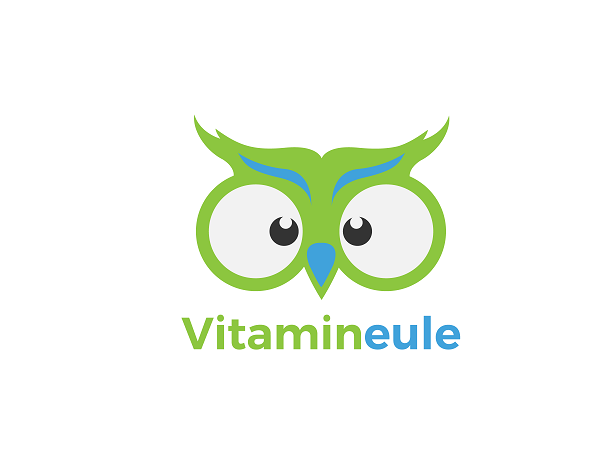

Team Vitamineule
Questions, requests or suggestions? Simply contact us by email or on Facebook.
1. Spirulina: A look at the history of the oldest superfood in the world
Often referred to as the world's oldest superfood, spirulina has a fascinating history that dates back thousands of years. This blue-green algae, which thrives in the alkaline waters of tropical and subtropical areas, is known not only for its high nutritional content, but also for its impressive longevity and use by various civilizations throughout history. The origins of spirulina use can be traced back to the ancient Aztecs and other Mesoamerican cultures, who collected this algae from Lake Texcoco in the region of present-day Mexico. The Aztecs valued spirulina for its strengthening and revitalizing properties and incorporated it as a regular part of their diet. They developed methods to extract spirulina from the lake, dry it, and form it into cakes, which were then consumed as a nutritious food. This practice was so common that there are accounts from Spanish conquistadors documenting the Aztecs' algae collection and use. But the history of spirulina is not limited to pre-Columbian America. There is also evidence that spirulina has been used as a food source for centuries in Africa, particularly around Lake Chad and other regions where alkaline lakes are present. The indigenous peoples of these areas harvested the algae in a similar way to the Aztecs, dried it, and used it to enrich their meals. This traditional use of spirulina as a food underscores its importance as a natural and sustainable source of protein in various parts of the world. Modern science only began to recognize and explore spirulina's potential in the 20th century. Researchers became aware of spirulina's exceptional nutritional properties, including its high protein content, variety of vitamins and minerals, and the presence of antioxidants and essential fatty acids. These discoveries led to spirulina being cultivated and marketed as a dietary supplement worldwide, with the algae being celebrated for its health-promoting properties and as a potential solution to food shortages and malnutrition. Over the past few decades, spirulina's popularity has continued to grow, driven by growing awareness of health, wellness and sustainable nutrition. Today, spirulina is cultivated on a large scale in controlled environments to ensure high quality and purity. The algae is offered in various forms, including powder, tablets and capsules, and is used in a variety of products, from dietary supplements to natural cosmetics. Spirulina thus represents not only a long history of human use, but also the modern science and technology that make this ancient superfood accessible to people worldwide. Its enduring popularity and wide range of uses testify to the timeless fascination and diverse benefits that spirulina offers. As one of the oldest known life forms on our planet, spirulina remains a symbol of the interplay of tradition, nature and science - a truly global superfood that transcends the boundaries of time and culture.
2. Spirulina vs. Chlorella: A comparison of the superfood algae
Spirulina and chlorella have established themselves as two of the most prominent superfoods, both known for their deep green color and impressive nutrient profiles. While spirulina, a blue-green algae found in a variety of bodies of water, is primarily valued for its high protein content and wide range of vitamins and minerals, chlorella, a green algae found in freshwater, is characterized by its exceptionally high chlorophyll content, which not only gives it its intense color but also special detoxifying properties. Spirulina is particularly known for its protein content, which can make up to 70% of its dry weight and includes all essential amino acids, making it an excellent source of protein. It also contains a variety of antioxidants, beta-carotene and various B vitamins, including B12, making it particularly attractive to vegetarians and vegans. Its rich nutrients support the immune system, can reduce inflammation and improve endurance. Chlorella, on the other hand, in addition to its high chlorophyll content, which supports the detoxification of the body, also offers a good source of iron and vitamin C, which can improve iron absorption. Its ability to bind and remove heavy metals and other toxins from the body makes it a valuable supplement for promoting detoxification and supporting gut health. A key difference between the two algae is the nature of their cell walls. Chlorella's hard cell wall cannot be broken down by the human digestive system and therefore must be mechanically processed before ingestion to make the nutrients accessible. Spirulina, on the other hand, has a soft cell wall that is easily digestible and allows for direct availability of its nutrients. Both algae are offered as dietary supplements in various forms such as powder, tablets or capsules. Spirulina is easier to integrate into the daily diet due to its milder taste, for example in smoothies, juices or salads. Chlorella has a stronger, often perceived as "greener" taste, which is not to everyone's taste, which could explain the preference for capsule or tablet form. Despite their differences, spirulina and chlorella complement each other well and offer a wide range of nutrients and health benefits. The choice between spirulina and chlorella ultimately depends on individual health goals, nutritional needs and personal preferences. Both algae are a valuable addition to a balanced and healthy diet that promotes well-being and can help prevent disease. Their unique properties and benefits make them an essential part of modern nutritional supplementation, harnessing the power of nature to support health and vitality.
3. Where does spirulina come from?
The origins of spirulina algae reach deep into the history of nature, and its discovery reads like a fascinating chapter in the evolution of our planet. Spirulina, also known as blue-green algae, sits atop the list of the oldest living organisms on Earth. Scientifically classified as cyanobacteria, the algae has its roots in ancient waters and lakes that have graced the blue planet for millions of years. Spirulina's history can be traced back to the Aztec culture that flourished in Mexico hundreds of years ago. Even then, the Aztecs recognized the value of this algae and used it as a mainstay of their diet. Spirulina thrives in specific environmental conditions, particularly alkaline waters with a high salt content that are unfavorable to many other organisms. The algae showed amazing adaptability and thrived in the extreme conditions of salt lakes, where it found optimal growth conditions. Over time, spirulina has thrived not only in the tropical waters of Mesoamerica, but also in many other regions of the world, including Africa and parts of Asia. The algae has proven to be amazingly resilient to environmental conditions, establishing itself in a variety of climatic zones. Its ability to grow in nearly any saltwater reservoir has led to spirulina being cultivated in ponds, lakes, and artificial farms worldwide today. Modern technologies have further advanced the commercial production of spirulina, with special farms and facilities created to create the conditions for the algae to grow optimally. These farms utilize natural sunlight and carefully controlled environmental conditions to ensure a high-quality spirulina crop. The algae is harvested, dried, and then processed into various products ranging from nutritional supplements to cosmetic applications. Spirulina's journey from Aztec cultures to modern uses is a fascinating part of its history. Today, spirulina is not only a fundamental ingredient in many nutritional concepts, but also a symbol of adaptability and survival in the world of microorganisms. Its origins in primeval waters have made spirulina a timeless element that looks not only to the past but also to the future of our diet.
4. Organic Spirulina in the form of dietary supplements
If you want to increase a low spirulina level with a dietary supplement, you should definitely pay attention to the form of the active ingredient and its origin. Spirulina capsules are particularly suitable for increasing the spirulina level. They are very well tolerated and are utilized by the body to a high degree. The preparation should also not contain any chemical additives such as microcrystalline cellulose. If you buy a preparation from Germany, you can be sure that the product has also been produced safely and is of high quality.
Our recommendation:
Vitamineule® Organic Spirulina Capsules
In our online shop you will find our Spirulina capsules from Vitamineule®, which are completely free of artificial additives. Vitamineule® Spirulina capsules contain 320 mg of pure spirulina powder per capsule. Each can contains 90 capsules. In addition to fast and free shipping, we offer a voluntary six-month return guarantee for all products.
5. Conclusion: Spirulina: A look at the history of the oldest superfood in the world
Spirulina's journey from ancient civilizations to modern society underscores its continued importance and value as one of the world's oldest superfoods. Its use by the Aztecs and at Lake Chad in Africa, based on its nourishing and restorative properties, provides impressive testimony to the timeless appreciation of this natural wonder drug. With the advancement of science and technology, our understanding of spirulina has deepened, leading to a worldwide recognition of its numerous health benefits. Modern cultivation and processing of spirulina make it possible to offer its valuable ingredients in concentrated form as a dietary supplement, making it much easier to integrate into the daily diet. Given its high content of proteins, essential amino acids, vitamins, minerals and antioxidants, taking spirulina in the form of a dietary supplement is an excellent way to supplement your diet and support your health. It offers a simple solution to benefit from its anti-inflammatory, immune-boosting and antioxidant properties, especially at a time when maintaining a balanced and nutrient-rich diet can be challenging. In addition, choosing spirulina as a dietary supplement reflects the growing awareness and need for sustainable, environmentally friendly food sources. Its efficient production with a low environmental footprint makes spirulina a forward-thinking choice for health-conscious people who care not only about their own health but also that of the planet. In conclusion, spirulina in supplement form is worthwhile, both for the practical aspects of nutrient intake and for its potential to help solve global health and environmental problems. The rich history and ongoing research underpins spirulina's position as a valuable superfood whose benefits and importance have endured for millennia.
Further sources:
- Management of Iron-Deficiency Anemia in Inflammatory Bowel Disease
-
Management of Iron Deficiency Anemia
Disclaimer and general information on medical topics: The content presented in our health blog is intended solely for neutral information and general education. It does not represent a recommendation or promotion of the diagnostic methods, treatments or drugs described or mentioned. The text makes no claim to completeness, nor can the timeliness, accuracy and balance of the information presented be guaranteed. The text is in no way a substitute for professional advice from a doctor or pharmacist and it must not be used as a basis for independent diagnosis and the start, change or termination of treatment of illnesses. If you have any health questions or complaints, always consult your trusted doctor. Mach Dich Wach! GmbH and the authors accept no liability for inconvenience or damage resulting from the use of the information presented here.

